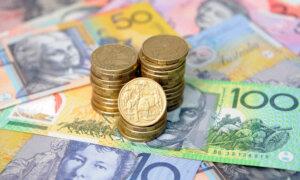Consumers are using credit cards like never before, with credit card balances currently at an all-time high. The average credit card balance in the United States is a whopping $6,501 per cardholder.
Along with this, the stock market has exhibited far more volatility in 2025 than we’ve seen in the past couple of years. Both the S&P 500 and the NASDAQ have touched correction-level territory. Despite renewed surges to get the market back in party mode, investors are becoming increasingly less willing to risk their nest eggs.
In light of these volatile conditions, you’re probably looking for safer investments and accounts, whether for your savings or your credit card debt.
Let’s take a look at the best of the best when it comes to today’s credit cards, high-yield savings accounts, and money market accounts.
Credit Cards
The best credit card for you depends on your needs, including whether you’re fond of credit card rewards, need a long period of time at 0 interest to right-size and downsize that balance, or are especially focused on finding the lowest long-term interest rates. Let’s dive further to broaden the picture and help you find the card that suits you personally.The
Wells Fargo Reflect Card offers 0 percent introductory annual percentage rate (APR) on purchases and balance transfers and for 21 months from account opening. Interest rates vary widely, from 18.24 percent to 27.24 percent variable APR. No other rewards are presently being offered, but there is no annual fee.
The
Discover it Cash Back Card provides 5 percent cash back on rotating categories and matches all cash back earned in the first year. The card offers zero percent introductory APR on purchases and balance transfers, and for 15 months from account opening.
Interest rates vary widely: 17.24 percent, 23.74 percent, or 28.99 percent variable APR. Cash back rewards from 1 percent to 5 percent are presently being offered and there is no annual fee. For its Welcome Offer, Discover matches all the cash back you’ve earned at the end of your first year.
The
Capital One Venture Rewards Card offers great rewards but doesn’t include an introductory 0 percent interest rate. Interest rates on this card vary from 19.99 percent to 29.24 percent variable APR. Currently, you can earn a bonus worth $1,000 during your first calendar year.
You will also earn 75,000 bonus miles after spending $4,000 in the first 3 months and $250 in travel credits. A Welcome Offer of 75,000 miles is available, but this card will cost you an annual fee of $95.
The
Chase Freedom Flex Card combines cash back rewards with no annual fee. It offers 0 percent introductory APR on purchases and balance transfers, and for 15 months from account opening. Interest rates range from 18.99 percent t0 28.49 percent variable APR.
This card currently offers 5 percent cash back rewards. A welcome offer of a $200 “bonus” is in place as well.
All things considered, my personal favorite is the Wells Fargo Reflect Card, because you don’t pay interest for almost two years and there is no annual fee.
Savings Accounts
Here are some of the top high-yield savings accounts available in March 2025:Pibank: Offers a 4.60 percent annual percentage yield (APY) with no minimum balance requirement, no monthly maintenance fees or hidden charges, no minimum balance. You can manage your account online or through their app.
BrioDirect: Provides a 4.50 percent APY and requires a $5,000 minimum deposit.
CIT Bank: Provides a 4.30 percent APY and requires a $5,000 minimum deposit.
Bread Savings: Features a 4.40 percent APY high-yield interest rate and customers can open an account with as little as $100. There are no fees or monthly charges, and accounts can be managed online or through a mobile app.
These accounts are FDIC-insured up to $250,000, guaranteeing your money is safe while earning interest.
Note the emergence of online institutions such as Pibank. Pibank, a brand of Miami-based Intercredit Bank, serves customers nationwide. Its only product is a high-yield savings account that comes with its competitive 4.60 percent APY. Given no minimum deposit requirement and the highest APY, this is my recommendation.
Money Market Accounts
Here are some of the best money market accounts currently available:Discover Money Market Account: This account offers an APY of 3.60 percent for balances up to $100,000 and 3.65 percent for balances above $100,000. It has no minimum balance requirement.
Like the savings accounts we highlighted above, FDIC insurance covers your money up to a limit of $250,000. Note that the range of rates in money market accounts varies considerably, just as savings account interest rates do today.
In the case of the Vio Bank Cornerstone Money Market Account, I feel that you have the best of the best. It offers several benefits that make it an attractive option for savers, including one of the highest APYs available, a requirement of only $100 to open your account, no fees (unless you opt for paper statements). Plus, you get to manage your account entirely online, with features like fund transfers and mobile banking.
Summary
If your sense is to be careful and reduce risk by moving some or all your stock investments into money market, U.S. Treasuries, high yield savings accounts, or Certificates of Deposit, be sure to consider these three important factors:Short-term and long-term goals. Stocks have proven to be good long-term investments, while holding on to them for at least five years smooths the bumps and volatility and delivers the highest investment returns. But your goals may be changing. You may need to ensure that your principal is protected in the near-term.
Tax implications. If your stock investments are in a (non-qualified) taxable brokerage account, selling may generate short and/or long-term capital gains taxes. On the other hand, if they’re in a qualified account such as an IRA, you won’t have to worry, as your only tax is income-based and that only on account withdrawals. And there just may be some tax loss harvesting on the taxable brokerage accounts.
Inflation. We discussed how you can lock in more than 4 percent, but after inflation, that “real” rate is only about 1.5 to 2.0 percent. This clearly constitutes “low growth” and may not cut it in terms of your retirement plans and nest egg goals. Inflation can go up, but it can also go back down again, so this is a judgment call.
The bottom line is, if you fear recession, are getting up in years, believe stocks are overvalued, and think protecting your principal despite earning a modest single-digit return is prudent, consider the best of the best. And best of luck to you!
The Epoch Times copyright © 2025. The views and opinions expressed are those of the authors. They are meant for general informational purposes only and should not be construed or interpreted as a recommendation or solicitation. The Epoch Times does not provide investment, tax, legal, financial planning, estate planning, or any other personal finance advice. The Epoch Times holds no liability for the accuracy or timeliness of the information provided.








